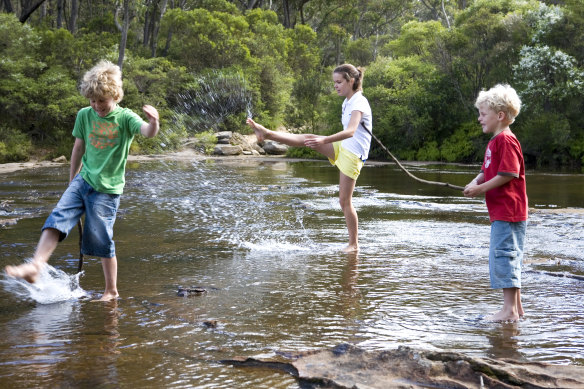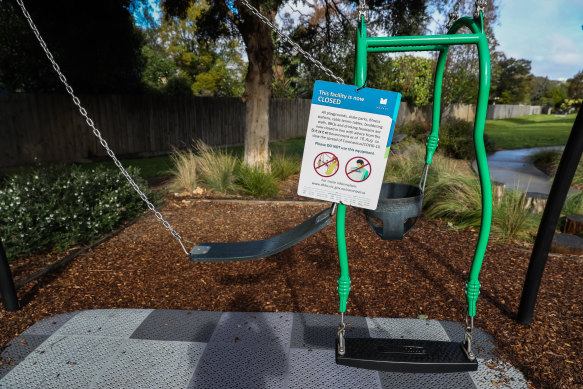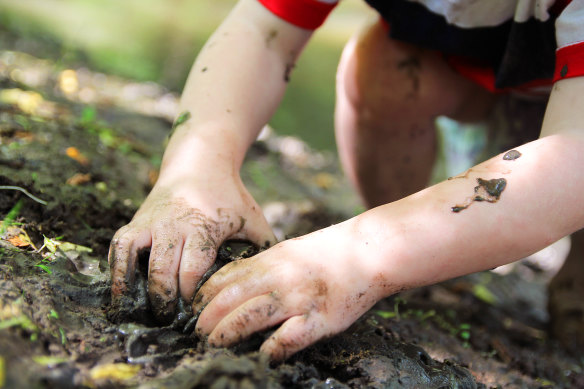This was published 3 years ago
Opinion
Playgrounds are open but there’s a better way to empower children
Dugald Jellie
ContributorThe boys ran into the bush, arms swinging, eager to explore. They found hiding spots, chased each other, walked along fallen logs, climbed a tree, swung on branches, yelling, giggling, clapping.
“Look at this, I found a stick,” said one.

Many children have found ways to navigate through the pandemic in nature.
“They’re survival sticks,” said the other.
Playgrounds reopened at midnight on Thursday, but all through lockdown many children have found other ways to navigate through the pandemic, simpler pleasures – making mud pies, hunting for tadpoles, chasing a butterfly – that might just provide them with deeper, lifelong fulfilment.
A recent Australian review of studies into nature play found what most parents know intuitively; being outdoors among greenery has manifold benefits for children’s physical and emotional wellbeing. Get their hands and knees dirty, and their hearts and minds open to joy and hope.
“Children love to play with rocks, sticks, sand, water, but as our society has become more desk-bound, risk-averse and time-poor, fewer children have these opportunities,” says one of the review’s authors, University of South Australia researcher, Kylie Dankiw.

Melbourne’s playgrounds were closed for a brief period.Credit: Getty
Bureaucracy and stifled imagination also routinely constrict, over-engineer and predetermine play in risk-averse, council-approved playgrounds.
Working with children in schools and kindergartens, I’ve seen their capabilities. I’ve had them butter bricks, roll bluestone blocks, dig post holes, design “tree boats”, fill wicking garden beds with soil and ripe compost. Every child I’ve met is curious about an earthworm. Most ask for a job to do.
At St Kilda Balaclava Kindergarten, I marvelled at the enjoyment children had from a cardboard cubbyhouse. Its shape changed daily. It had intimate spaces they crawled into. Communal halls. And when done with, it was packed up and recycled.
In Berlin, a birthplace of playgrounds – of the kindergarten – there’s a child’s play space, Kolle 37, set aside to be built by children. It’s a dreamscape of creativity, realised partly in Melbourne in a handful of adventure playgrounds with roots in post-war Europe, with educators observing the pleasure children got from playing in bombed-out ruins.

I hope long lockdown days have made many rethink play.Credit: iStock
It’s an idea likely to frighten parents now, with so much about play sanitised, digitised, monetised.
I hope long lockdown days have made many rethink play (and the worth of green spaces in our city). Children have shaped common spaces to their needs. They’ve built bicycle jumps, chalked hopscotch squares, made bows and arrows. They’ve found a way.
My boys have been happiest outside, experiencing the fundamental truth of nature being the best playground.
A fallen tree, ocean-damp sand, a wave, a grassed hill to roll down – all can provide a positive sense of self they might remember longer than any swing or slide, or the endless loop of an Xbox game.
Dugald Jellie is a Melbourne writer and gardener. His work with children can be seen at bowerbirdgardens.com